As responsible travelers evolve, so do the stories we share.
This article is part of our living archive — trusted content we continue to care for.
First published on April 5, 2015 • Last updated on May 9, 2017.
Of all the events taking place in Quito during Holy Week, the procession of Jesús del Gran Poder is the most famous. It takes place on Good Friday, when thousands of participants gather at the Iglesia del San Francisco before starting on a parade route of more than two and a half miles. That may not sound like far until you realize that many participants will walk the parade route barefoot, others will carry large wooden logs across their shoulders or drag huge chains from their ankles, some will portray Jesus carrying his heavy cross, and all will climb the steep streets that lead up to the Basilica del Voto Nacional before turning and coming back to the plaza where they began. On hot days, the black tar can burn feet and parade watchers will pour water on the hot roads to cool the way for the penitents. In days of old, the route was even more difficult as the roads of the historic center were all cobble, making an uneven surface for walking.
This year, more than 1500 Cucuruchos and 300 Veronicas were expected to show. They were joined by thousands of other people, a great many who walked in the procession itself.
Modern Cucuruchos are both men and women dressed in purple robes with accompanying purple cone hoods that cover one’s face with two slits cut for the eyes. The term cucurucho literally means cone. These penitents march in the procession, often barefoot, as a form of redemption. Cucuruchos have been in Quito as far back as the 16th century when the tradition was brought from Europe to Latin America.
- Cucurucho, Good Friday, Quito
- Cucuruchos wear many different shades of purple.
- Many walk the parade route in barefoot in increase the difficulty of their penance.
- Portrait of a Cucurucho
- Cucurucho Bearing a Cruxifiction
- The Love – My Loves – Kerly and Mikaela
Veronicas represent the woman who comforted Jesus while he carried the cross. At one point along his route, she wiped sweat and blood from his face with her veil and legend has it that his image was transferred to it. Although this story does not appear in the Bible, it obviously resonates with Quiteños. Veronicas traditionally dress in black or in purple and wear veils. They often carry images of Christ.
- Hundreds of Veronicas
- Hundreds of Veronicas march just before the appearance of Jesús del Gran Poder.
- A young Veronica joined by two young Cucuruchos.
- A Veronica Among the Cucuruchos
- Veiled Veronicas
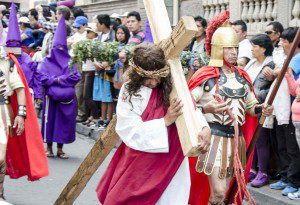 Alongside these very traditional members of the procession, there are also many representations of Jesus carrying the cross, accompanied by Roman soldiers.
Alongside these very traditional members of the procession, there are also many representations of Jesus carrying the cross, accompanied by Roman soldiers.
Another common sight were the Chacatallca. These were all men, except for the single boy we saw, carrying logs across their shoulders. The logs are attached to their bodies using ropes or wire or hojas de sigse which looked similar to stingy nettle. The red marks left on the backs of people using this same plant to strike their backs attest to burning and itching.
- Walking barefoot and dragging chains increases the difficulty of the penance.
- A penitent dragging heavy chains while striking himself with nettle-like branches that cause stinging and burning.
- Two Chacatallca walking side by side.
- Chacatallca carrying a heavy log while bound by wire.
- A penitent carrying a cross of cactus across his back.
- A Chactatallca, Good Friday, Quito
Then there were just the people. The ordinary everyday people that came out to walk alongside Jesús del Gran Poder or to help carry the dozens of other holy statues that graced the procession at different moments. There were a few along the entire parade route but at the very end, following the most important figure of all, they came in droves. Policeman were needed to control the crowds there were so many people. There was literally a sea of faces and it was impossible to see any space at all between them.
- This man wears a sign saying “Please help this person of little importance.”
- Many people helped carry small images of Jesus carrying the cross.
- A Young Girl Carrying a Small Cross
- When the procession stopped, people could hardly stand still for the weight of others pressing against them.
- Police had to hold people back in order to protect an area around Jesús del Gran Poder.
- Much of the procession was a combination of people in costume and in everyday clothes.


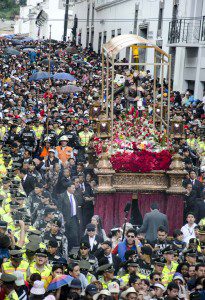
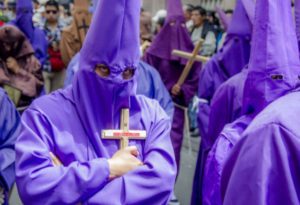
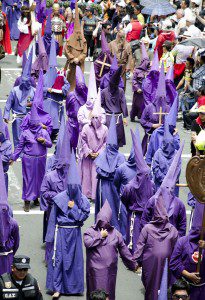
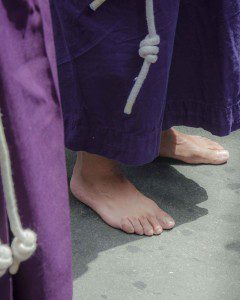
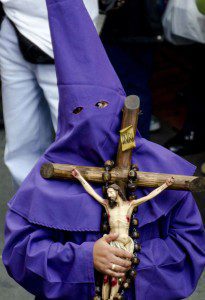
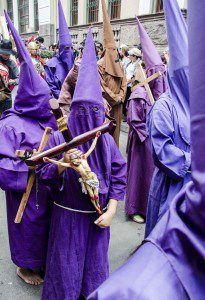
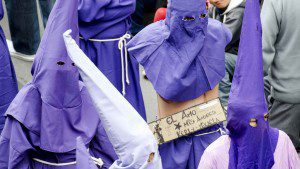
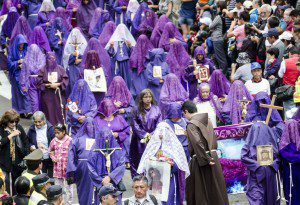
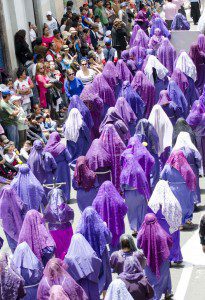
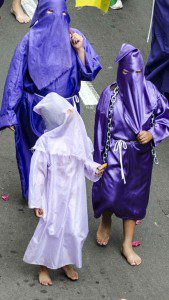

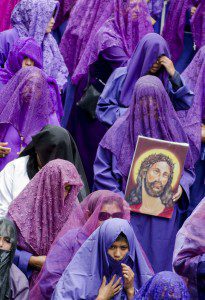
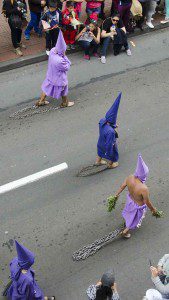
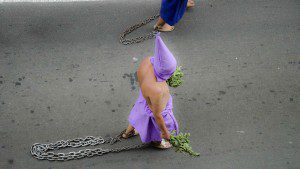
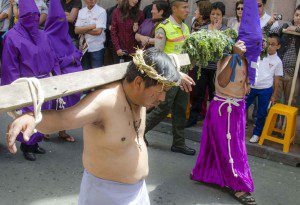
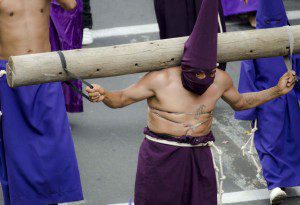
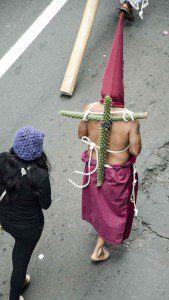

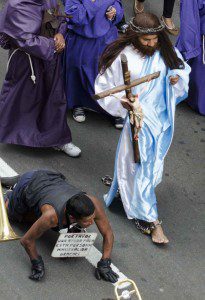
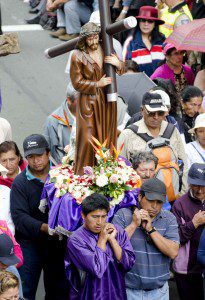



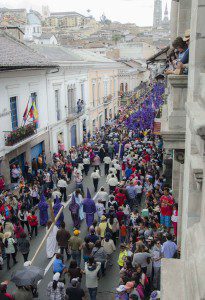
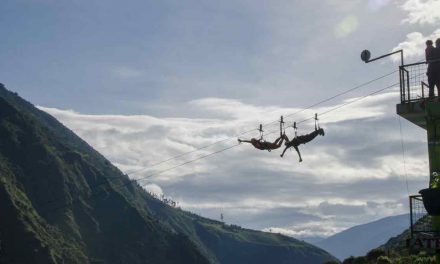

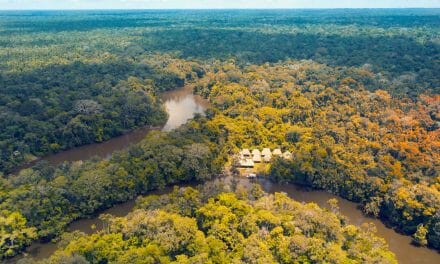
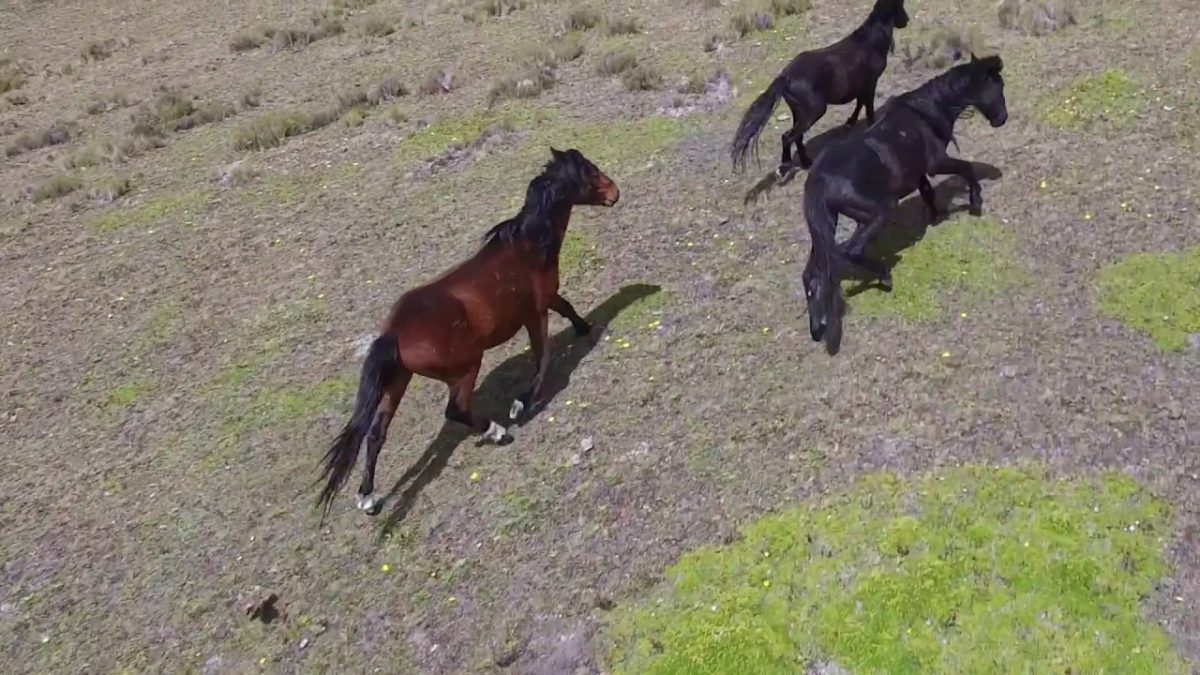

















Glad you found the explanations useful… yep, the ice cream cone meaning makes for some double-entendre moments when speaking Spanish as well! Funny enough, in Ecuador, an ice cream cone is called un cono and I often wondered if this was part of the reason why.
Finally found this interesting description of costume explaining something of what these perople were doing. My first sin-sin was to type in ‘cucuchuros’ and then found ice cream next to a penitent scene a la Ecuador in Microsoft Bing search 🙂
Well done page, excellent photos, … and thanks for rendering said explanations!
Peace from out of fire majeure,
R.S.